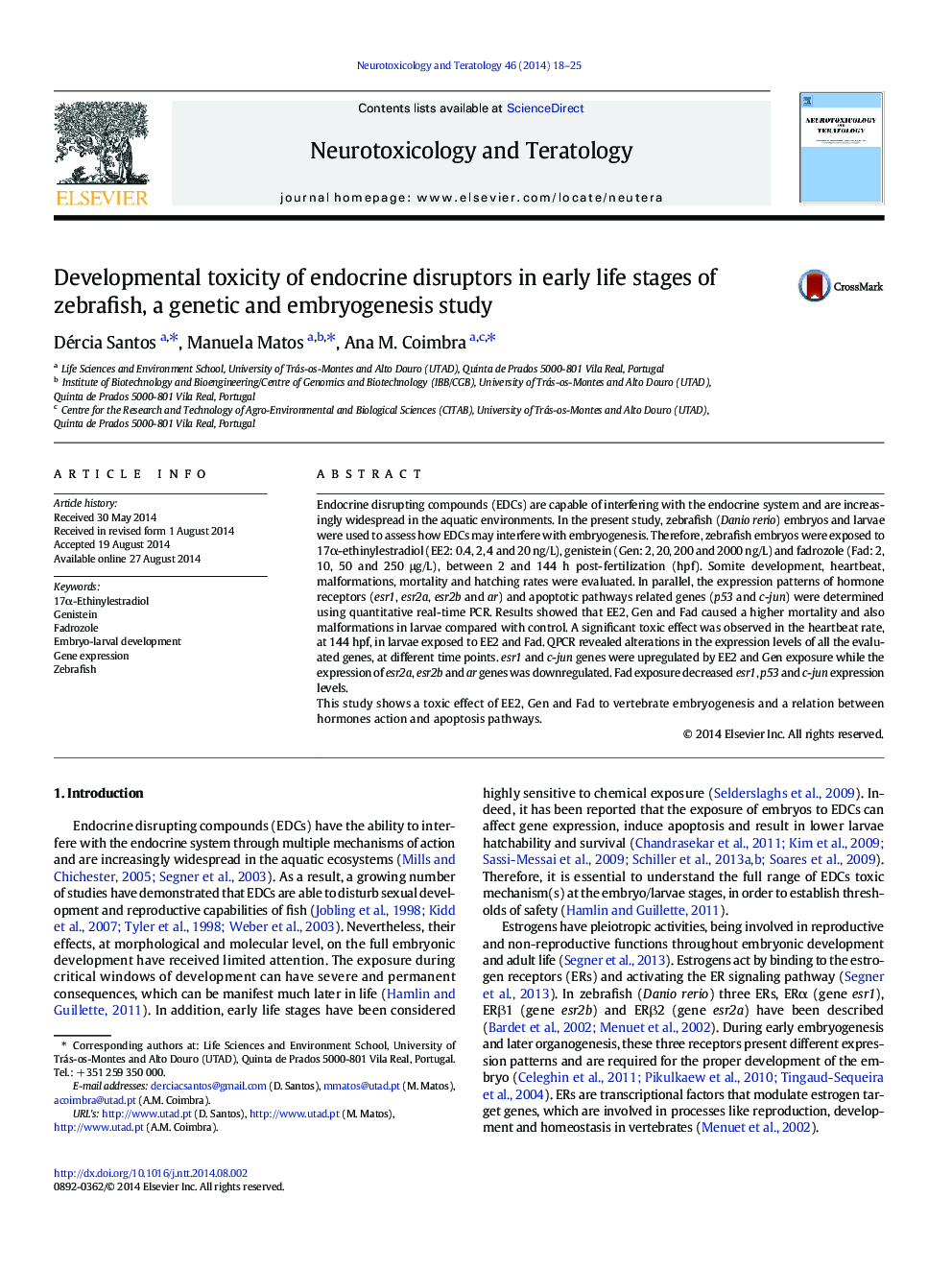| Article ID | Journal | Published Year | Pages | File Type |
|---|---|---|---|---|
| 2590936 | Neurotoxicology and Teratology | 2014 | 8 Pages |
•EE2, Gen and Fad induced developmental toxicity in zebrafish.•Mortality induced by EE2 and Gen showed a non-linear concentration response.•The expression of estrogen/androgen receptors and apoptosis genes were altered.•Sex steroids and apoptosis pathways communicate bidirectionally.•EDC exposures modulated sex steroids and apoptosis pathways.
Endocrine disrupting compounds (EDCs) are capable of interfering with the endocrine system and are increasingly widespread in the aquatic environments. In the present study, zebrafish (Danio rerio) embryos and larvae were used to assess how EDCs may interfere with embryogenesis. Therefore, zebrafish embryos were exposed to 17α-ethinylestradiol (EE2: 0.4, 2, 4 and 20 ng/L), genistein (Gen: 2, 20, 200 and 2000 ng/L) and fadrozole (Fad: 2, 10, 50 and 250 μg/L), between 2 and 144 h post-fertilization (hpf). Somite development, heartbeat, malformations, mortality and hatching rates were evaluated. In parallel, the expression patterns of hormone receptors (esr1, esr2a, esr2b and ar) and apoptotic pathways related genes (p53 and c-jun) were determined using quantitative real-time PCR. Results showed that EE2, Gen and Fad caused a higher mortality and also malformations in larvae compared with control. A significant toxic effect was observed in the heartbeat rate, at 144 hpf, in larvae exposed to EE2 and Fad. QPCR revealed alterations in the expression levels of all the evaluated genes, at different time points. esr1 and c-jun genes were upregulated by EE2 and Gen exposure while the expression of esr2a, esr2b and ar genes was downregulated. Fad exposure decreased esr1, p53 and c-jun expression levels.This study shows a toxic effect of EE2, Gen and Fad to vertebrate embryogenesis and a relation between hormones action and apoptosis pathways.
